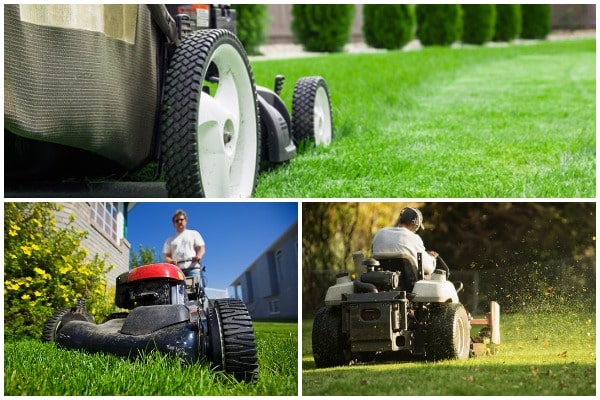As the snow melts and our lawns return to life, resist the urge to rush out with your lawn mower prematurely. Take some time to prepare your tools and take a careful, steady approach. Doing so will not only make the mowing process a breeze, leaving you more time to enjoy your yard, but it will also help ensure you’re left with a healthy, thriving space.
Here are some pointers before you undertake your first mow of many this year.

1. Sharpen Your Mower Blades
Justas sharp scissors give hair a better cut, sharp mower blades offer your grass a cleaner, healthier trim. Wearing gloves, remove the blade, and if you have the tools to facilitate sharpening at home, go for it; otherwise, take the blade to a local hardware store for an effective tune-up.
2. Charge Batteries or Stock Up on Gas
Depending on your type of mower and strimmer, ensure your batteries are fully charged or that you have an extra jug of gasoline. Getting halfway through your first mow and running out of power is quite irritating.
Also Read: Zero Turn Riding Mowers: The Pros, the Cons of Owning One
3. Check Your Other Gardening Tools
Before peak gardening season, check your shears, clippers, rakes, and other tools essential for yard work.
Remove any rust, which may have built up over the winter, and check hose pipes for deterioration. If you have an automatic irrigation system — like those provided by EZ Lawn Sprinklers— spring is an excellent time for a tune-up! Professional teams like these will turn the system back on for you and inspect it for seasonal wear and tear, setting your yard up for a lush year ahead.
4. Clean Out the Mower Drum
Ideally, this will have been done in the fall. Shake out any old grass clippings from inside the collection unit and wipe it down with a dry cloth or a soft-bristled brush. Clearing this area of old clippings not only improves the machine’s efficiency, but can also prevent corrosion and stop the spread of disease throughout your yard.
The better care you take of your mower, the longer you’ll have it.
5. Don’t Set the Blade Too Low
While it’s tempting to give the lawn a short, neat spruce up, leave at least one-third of the blade of grass behind. If you cut the blade to the ground, you risk shocking the grass, leaving it open to cold snaps and disease.
Every time you cut the grass afterward, lower the blade slightly — over the course of multiple mows, you’ll reach your desired length.
6. Leave a Patch of Lawn Uncut
If you’re able to do so, consider leaving a patch or a larger area of grass until early-May. Pollinators and other wildlife are often still hibernating under blades of grass, and native pollinators feed from early dandelions. Encouraging pollinators in your greenspace is especially beneficial if you grow fruit and vegetables during the warmer months.
For many, the first mow of 2023 is something that fills them with dread. With a few easy measures, your first mow will be an efficient, even pleasant, experience. After all, this is your first step towards preparing your yard for a fun summer ahead.